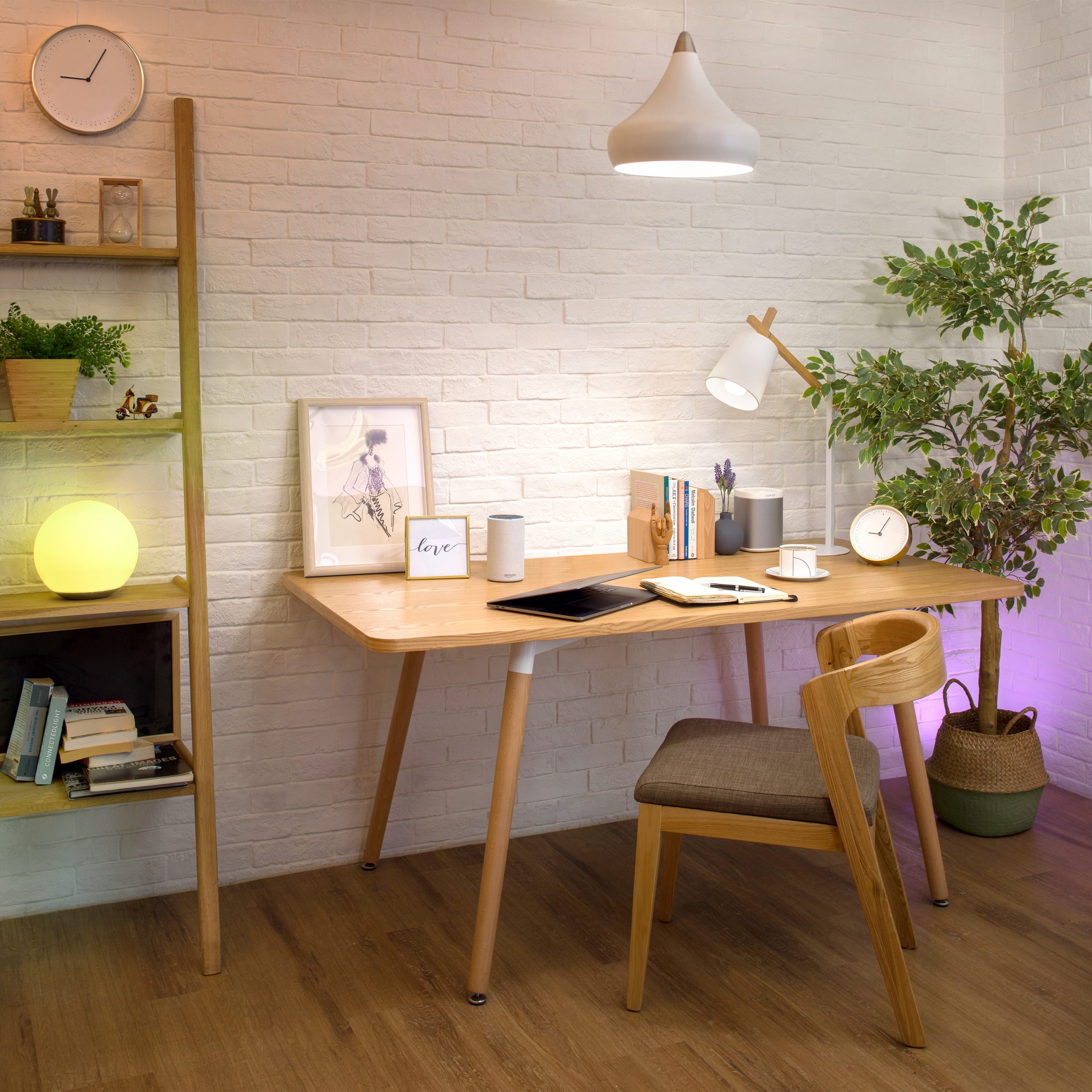Press Releases
Four in ten home workers ditch regular work routine to split up their day
Two months on from ‘Freedom Day’ new research shows that seven in ten (69%) former office workers are still working from home full or part-time.
The rise in home working has seen the end of the 9-to-5 with 27% of home workers saying they work longer hours at home and 43% said they split their working hours across the day. One in five said they started work earlier at home than they used to in the office, and 22% said they finished later while homeworking.
This new way of living and working in the same space looks set to stay and with it comes both benefits and challenges. The survey of 1,000 workers from smart lighting brand 4lite showed that the vast majority (83%) say they enjoy working from home; meanwhile, bosses can breathe a sigh of relief as two-thirds (66%) of homeworkers think they get more work done at home rather than in the office.
Despite more than half (57%) of people say their wellbeing is better when they work from home, a third (34%) admitted to sometimes feeling uncomfortable without the luxuries of their office and four in ten (43.5%) said they find it hard to de-stress while working from home.
Distraction can also be a challenge to those working at home with 46% admitting to being more easily distracted at home than in a workplace, 38% saying it’s harder to get into the swing of the working day and 34% finding it more difficult to concentrate at home rather than in the office.
Jane Rylands, Head of Marketing for 4lite, said: “Homeworking looks like it’s here to stay so we need to look at the challenges faced by people working in spaces designed for living rather than working.
“Offices are designed with workers in mind and lighting is a key element, so employees are typically afforded bright spaces with appropriate illumination – your average home back bedroom, kitchen table or other impromptu home workspace is not ready-made for laptop life.
“Lighting is often overlooked, but can be a great way to help us focus and concentrate – especially if people are working early in the mornings or later into the evenings as we flex our working hours.
“Natural light changes from a warm colour in the morning, to a cooler blue during the day and then back to a warmer hue in the evening which prompts the body into knowing when it should feel awake and energised or more relaxed and ready to sleep.
“Smart lighting systems can be used to change the colour of the light emitted to mimic the pattern of natural lighting inside, enhancing health and wellbeing, or use cooler lights when we want to feel more alert and focused.
“Unwinding is also an important factor in keeping a healthy work-life balance when we’re living and working in the same space, so switching the colour temperature on a smart bulb to a warming yellow can help to rest the eyes and signal to the body that it’s time to relax.”
Anna Codrea-Rado, Author of You’re The Business and co-host of the Is This Working? podcast said: “As a veteran home worker, I’m excited to see the shift towards normalising flexible working. Working from home offers the chance to do uninterrupted, focused work and the time saved on commuting can mean better work/life balance. The secret to reaping these benefits is setting boundaries.
“An overlooked looked place to start is setting up our spaces, which is key to overcoming distractions, feeling more comfortable and demarcating our living and working modes. From ergonomic chairs and comfortable desks to noise reduction and lighting, there are plenty of easy ways to optimise our workspaces for productivity.
“One of the best things about bringing the office into our homes is that we get to decide what it looks like. No longer at the mercy of stuffy office design, we can add personality, smart tech and comfort to our workspaces. As working from home looks set to stay, it’s important to find ways to make it work for us.”
4lite smart bulbs with WiZ Connectivity can be set to mimic your natural sleep-wake patterns, not only brightening and dimming over the course of the day but changing the colour temperature of the light emitted to blue tones to promote energy and wakefulness or yellow hues to soothe the eyes and relax the body.
Published by PRFire

